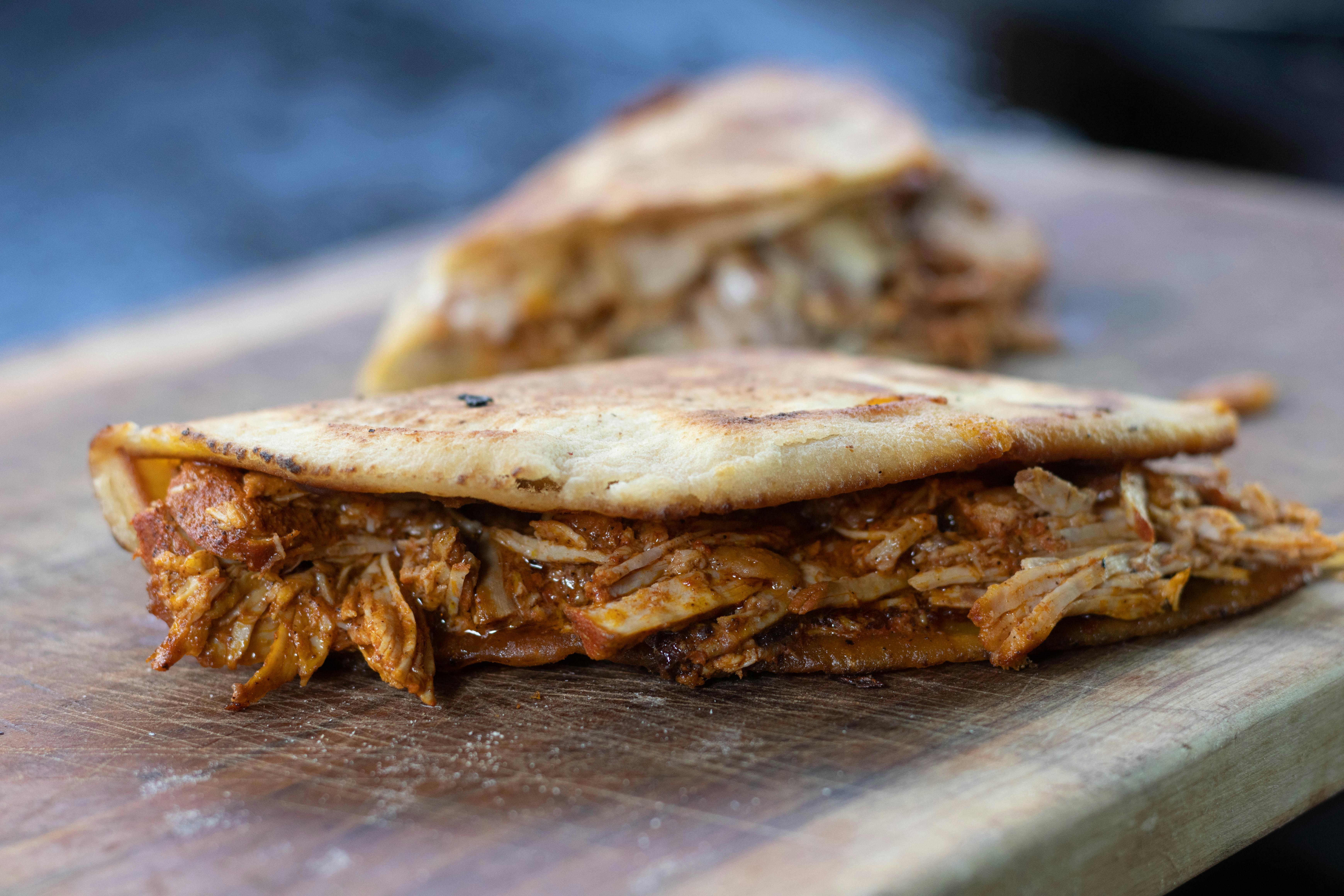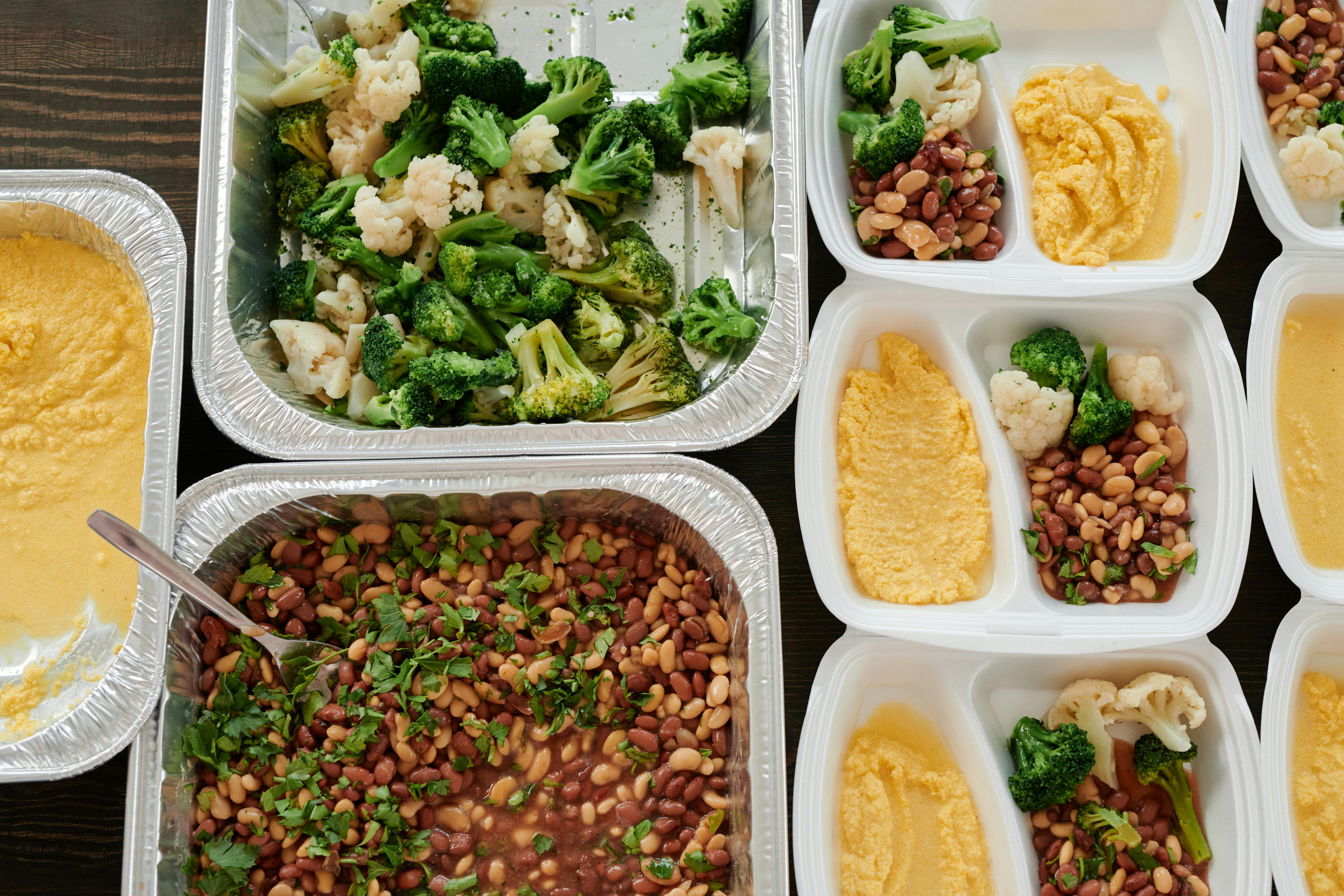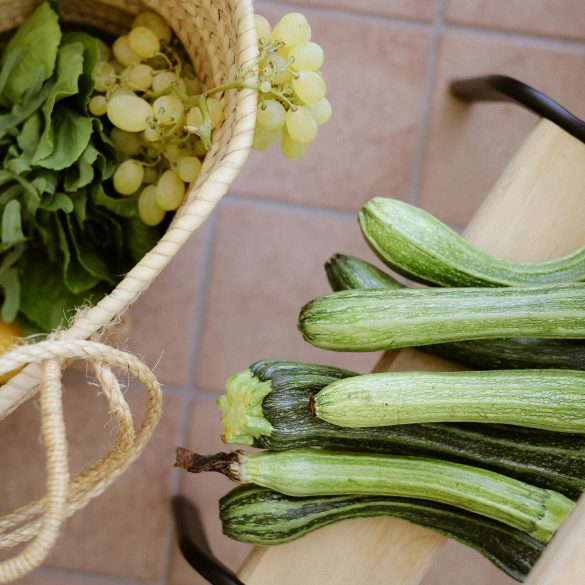Colombian Food: Smart Meal Prep Tips for Busy Professionals
Funny thing is, most people think Colombian food is all about arepas and hearty stews—but that’s only the start. Over fifteen years of condensing complex cuisines into practical weekly routines, I’ve come to see Colombia as one of the most rewarding countries for meal prepping. Why? Because the flavors are bold, the ingredients are accessible, and the cultural “prep” is baked into each recipe’s DNA. Let me set the scene: You’re rushing out the door, the city just waking up beneath soft mist, and that on-the-go empanada is the difference between a chaotic morning and one with real flavor and focus. That—the promise of instant, nutritious, local comfort—is exactly what busy professionals in Colombia have quietly mastered for decades1.
Colombian Food Prep: Cultural Basics
In my experience, the biggest myth about Colombian food—especially at the office or during late-night deadlines—is that it’s high-effort, slow-cooked, and “just plain too much.” Let me clarify: this belief misses the secret genius behind Colombian meal prep traditions. Historically, quick snacks like buñuelos (cheese fritters), pandebono (cassava bread), and tamales were designed for grab-and-go workdays. Even the fancier dishes—ajiaco, bandeja paisa, coastal ceviches—can be adapted for minimal fuss. What I should have mentioned first, though, is that Colombia’s local food prepping dates back centuries, long before modern Tupperware2.
I’ll be completely honest: every time I stood behind a bustling Bogotano breakfast counter, the real lesson wasn’t in cómo to assemble an empanada, but how the vendors prepped hundreds with speed, flavor, and no sacrifice to nutrition.
Time and Ingredient Challenges Professionals Face
Visión clave: Colombia’s unique blend of altitudes means produce (and prices!) can change dramatically week to week. Last month, finding fresh guascas (a must for ajiaco) took me ten minutes in central Bogotá, but only thirty seconds in a Chapinero corner shop.
Honestly, I reckon the top challenges are—without question—shortage of time (especially post-pandemic return to offices), unpredictable ingredient quality, and the pressure to “eat healthy, local, and fast” all at once. The solution is not more complicated recipes, but better prepping systems. I’ve consistently found that the busiest professionals don’t even follow recipes; they create “flavor bases” that power three or four meals. Anyone else relate?
- Sudden ingredient swaps (e.g., spinach for guasca, chicken for beef).
- Meal boredom: rice overload week after week.
- Tiny kitchens—most Bogotá apartments don’t have room for six pots.
- Balancing work deadlines with cooking energy and attention.
On second thought, I need to revise my earlier point: It’s not just about time—it’s also about managing expectations and making those Colombian flavors accessible. Let’s dig into the guiding principles that have shifted how my colleagues and I approach prepping.
Core Meal Prep Principles (Colombian Edition)
- Simplicity wins: Pick a base (rice, beans, arepas), build around sauces (hogao, guacamole), add 2-3 proteins for flexibility.
- Local sourcing: Shop weekly at plaza markets, not supermarkets.
- Batch, not bulk: Cook just enough to last 2–3 days, adapting seasoning for each meal.
- Prep in “kits”: Pre-chop/cook and store in color-coded containers; one for breakfast, one for lunch, one for dinner.
Ever notice how most local professionals save the most complex dishes for weekends? Weekdays are all about practical, balanced flavor with minimal effort.
Simple Starter Meal Prep – Four Steps for Colombian Beginners
If you’re just starting out—whether you’re based in Colombia or simply want authentic workweek eating—my approach usually starts here:
- Pick one main ingredient (e.g., lentils, chicken breast, eggs) per week.
- Identify two ways to season it (hogao sauce, chimichurri).
- Pre-cook grains or arepas in bulk and store flat.
- Pack snack “bites”—mini arepas or buñuelos for between-meetings fuel.
What struck me most in my first kitchen was the sheer versatility of simple Colombian sauces—one hogao base can become breakfast eggs, lunch stir fries, and dinner topping in seconds. Honestly, if you take nothing else from this guide, let it be the power of prepping a single, flexible base sauce.
Building a Weekly Colombian Meal Prep System
Let me step back for a minute—before we get into my “advanced” meal prep strategies, did you know that most Colombian households build their weekly eating plan around three core elements? Grains (rice, corn meal), proteins (chicken, beans, beef), and one rotating vegetable batch (sautéed veggies, simple soups). Interestingly enough, I used to think all those vibrant flavors came from complicated blends, but actually, it’s the consistency of batch prepping that creates so much variety with so little time invested4.
- Cook rice or quinoa in 1-kg batches, spreading over several meals.
- Marinate proteins in lime and garlic overnight.
- Prepare hogao sauce with tomatoes, scallions, cilantro—store in an airtight container.
- Grill or roast veggies for flexible sides or fillings.
- Freeze 1–2 “emergency lunch” containers for workday crunch.
Time Breakdown: Prep vs. Cooking vs. Eating
Personal Learning: For years, I spent twice as long on prep as cooking—until I realized the “prep window” is where most professionals save energy. I now target 90 minutes total per week: 35 minutes prepping, 25 cooking, 30 packaging/cleaning.
| Paso | Duración típica | Colombian Example | Consejo profesional |
|---|---|---|---|
| Prepping | 25-40 mins | Chop veggies, marinate chicken, cook rice | Use two cutting boards for speed |
| Cooking | 20-30 mins | Batch fry empanadas, sauté beef | Stagger steps to avoid downtime |
| Embalaje | 15-25 mins | Pack lunches, portion snacks | Label containers by day/protein |
Simple Colombian Timing Tricks
- Shop Sunday mornings—the best local deals on fresh produce appear before 10am5.
- Boil eggs, make arepas, and chop veggies the night before your workweek begins.
- Always have two “mix-and-match” sauces ready (hogao, ají).
- If you miss your Sunday window, aim for Tuesday to avoid crowded markets.
- Freeze individual portions for “zero-cook” days.
Ever ask yourself, “Why does my prepping always feel stressful on Mondays?” Turns out, that’s the most common day for ingredient shortages—not personal failure. Let that sink in for a second. Adjust your rhythm, and prepping becomes almost enjoyable.
Colombian Kitchen Staples for Easy Prep
Here’s what gets me: You always think you’ll need “everything” for authentic flavor. Not true! After several years, my staple list narrowed to only eight must-haves, most under $3 per batch:
- Rice (white or brown, for bases)
- Corn flour (arepas, empanadas)
- Eggs (protein, snacks)
- Chicken breast/thighs (universal protein)
- Beans/lentils (fiber)
- Scallions, tomatoes, cilantro (hogao)
- Cheese (feta, campesino, costeño)
- Lime (marinade, drink base)
The more I consider this, the more I appreciate simple “fusion prep”—using local Colombian bases with universal veggies (carrots, spinach, bell peppers). You get authentic flavor without “exclusive” shopping lists.
Fast Nutrition Tips: Smart Colombian Choices
Practical tip: I’m partial to prepping lentils and beans together. If you add chicken, you hit almost every nutritional target—fiber, protein, and slow-burning carbs, with $5 for three meals. No need to complicate.
Nutrition experts consistently recommend combining grains (rice, corn) with legumes (beans, lentils) for sustained energy and balanced gut health. That’s the Colombian workweek secret sauce7.
Okay, let’s step back—before you get fixated on the “perfect” Colombian flavor, remember this: Adapt and remix as needed. My own prep has changed every few months, and that’s perfectly normal.

Mix, Match, and Remix: Real Colombian Meals for Busy Days
What really excites me about Colombian prep—especially for busy professionals—is how easy it is to “remix” the basics. Back in 2019, I discovered that two sauces (hogao and ají) were all I needed to turn one base into three workday meals. Here’s a simple example:
| Base | Add-On | Meal Type | Flavor Twist |
|---|---|---|---|
| Rice | Beans & Hogao | Almuerzo | Fresh cilantro, lime |
| Arepas | Eggs & Ají | Desayuno | Coastal cheese, tomato salsa |
| Chicken | Lentils, veggies | Cena | Grilled peppers, spinach |
I’m still learning how to keep things fresh week after week—but honestly, the best meal preppers use just three flavor switches (lemons, hot sauce, fresh cilantro) and swap proteins around.
Mini Case Study: Bogotá Office Week, Prepped Colombian-Style
Last winter, during a relentless client sprint, my prepping routine fell apart—Monday eggs, Wednesday beans, Friday takeout overload. Finally, I reset by prepping Sunday night: did the lentils, boiled some eggs, batch-cooked chicken breast with lime. Throughout the week, I used the same base ingredients, adding hogao sauce and sliced avocado. The result? Consistent energy, zero food waste, and—I have to say—a lot more joy in office lunch breaks.
Colombian Meal Rotations & Weekly Varieties
- Monday/Tuesday: Arepa, eggs, and fresh salsa
- Wednesday/Thursday: Rice, beans, grilled chicken, hogao sauce
- Friday/Weekend: Lentil soup, beef arepas, tropical fruit snacks
Here’s a simple hack: Scallion-based hogao can switch breakfast into dinner prep, with taste that feels “brand new.” These rotational patterns grow out of real Colombian home cooking, but work just as well for tight schedules and small kitchens.
Adapting Meal Preps for Dietary Restrictions and Office Realities
I go back and forth on this: Should you stick with “authentic” ingredients or flex for allergies and office cooking realities? I used to worry about losing flavor, but now I realise that prepping for allergies is about switching out a few basics. You can swap cow’s milk cheese for coastal sheep cheese, use quinoa instead of rice, or use avocado slices in place of eggs. On second thought, every prep system is “authentically Colombian” if it balances comfort and energy for your lifestyle9.
- Vegan: Replace eggs with sautéed beans, tofu, and tropical veggie mash
- Low-carb: Use cauliflower arepas, grill extra veggies
- Gluten-free: Corn-based arepas, rice, natural fruit snacks
- Dairy-free: Omit cheese, add guacamole and lime
Honestly? The healthiest meal prepping comes from doing what works for you, remixing Colombian inspiration with personal priorities and budget.
Actionable takeaway: Don’t mimic “perfect” recipes—prep what you’ll actually eat and make sure it tastes good cold as well as hot. Colombian prepping is all about versatility.
Thought Prompts for Your Own Prep System
- What’s your number-one “can’t live without” base for busy weeks?
- How could you adapt a Colombian staple for your dietary needs?
- How do you balance prepping with taste, nutrition, and speed?
- Where do your favorite flavor swaps come from?
Advanced Colombian Prepping: Scaling for Groups & Long-Term Success
This actually connects back to the biggest prepping mistake I made years ago: trying to scale up without a system. Cooking for family, roommates, or office teams? Colombian prepping is forma more manageable if you use batch kits, label proteins, and store “sauces” in small jars. I need to revise my earlier point—group prepping is not just about volume, but consistency and flavor.
- Use larger containers for base grains, then add protein in smaller portions.
- Get creative with “snack” preps: mini buñuelos, vegetable fritters, tropical fruit boxes.
- Assign prepping roles if cooking with friends—one for sauces, one for proteins, one for sides.
Moving on, sustainability is a growing trend—even in Colombia. More and more city professionals are looking for packaging that’s reusable and ingredients sourced locally, especially since pandemic disruptions to supply chains. Sustainable prepping fits seamlessly into Colombian traditions10.
Keeping Your Prep Routine Fresh Over Time
Evergreen prep tip: Every season brings new local produce to Colombian markets—swap in mangoes in summer, guava in autumn, and switch up your bean varieties each month. Your prepping stays fresh and culturally connected.
Honestly, I go back and forth about the best routine—sometimes weekly prepping, sometimes every three days. Adapt your rhythm as your schedule changes. Plus, there’s genuine satisfaction in knowing your prepping connects you to Colombian food heritage y modern workday realities.
Llamada a la acción profesional
Make your Colombian meal prepping real this week: Start with just one kit (rice, beans, hogao), remix for breakfast and dinner, and add two local produce swaps. Share your prep journey, join a local club, or challenge your colleagues—your busy week can taste better than ever with these smart, simple steps!
Referencias
References & Source Links



